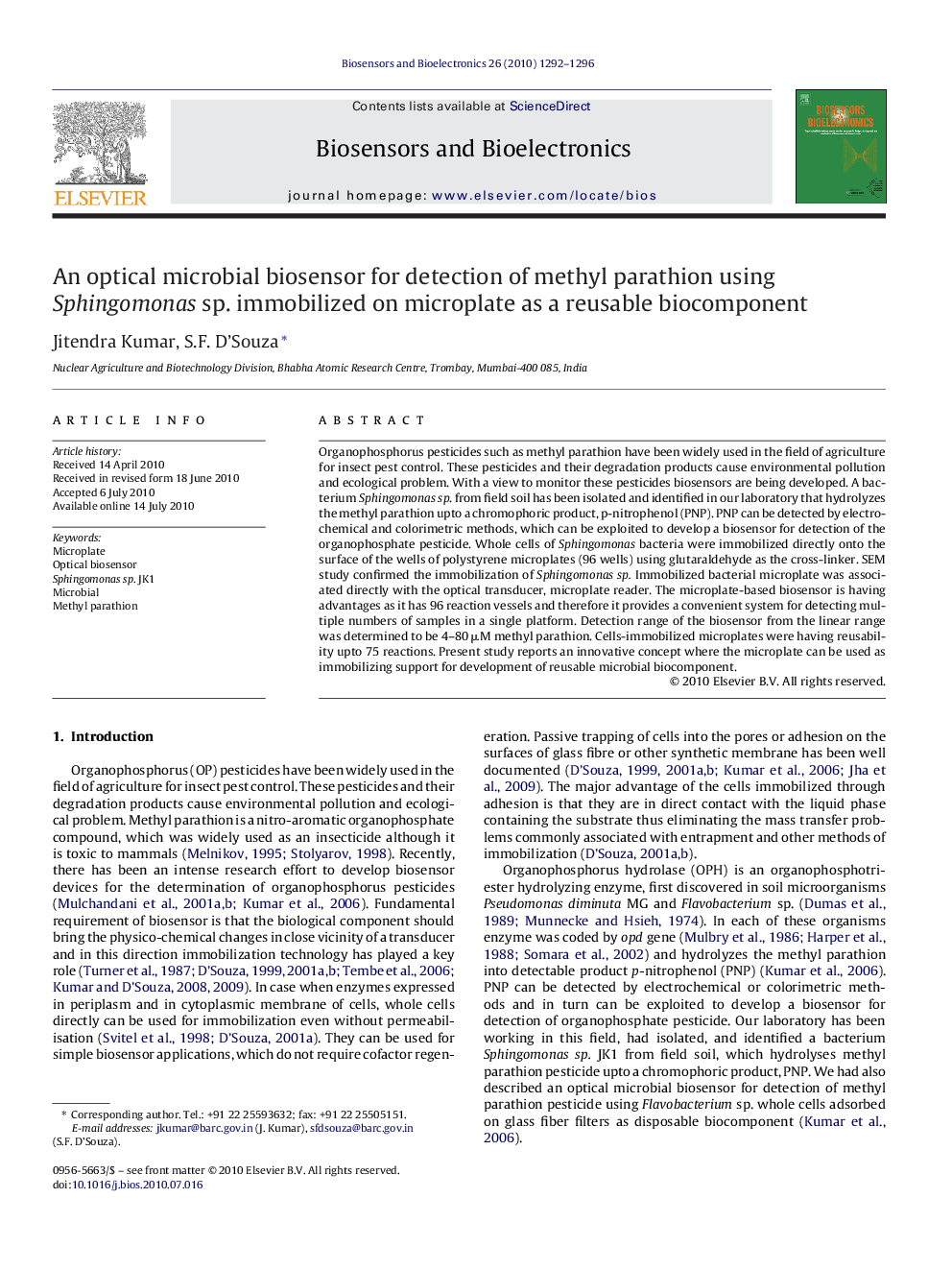| Article ID | Journal | Published Year | Pages | File Type |
|---|---|---|---|---|
| 868403 | Biosensors and Bioelectronics | 2010 | 5 Pages |
Organophosphorus pesticides such as methyl parathion have been widely used in the field of agriculture for insect pest control. These pesticides and their degradation products cause environmental pollution and ecological problem. With a view to monitor these pesticides biosensors are being developed. A bacterium Sphingomonas sp. from field soil has been isolated and identified in our laboratory that hydrolyzes the methyl parathion upto a chromophoric product, p-nitrophenol (PNP). PNP can be detected by electrochemical and colorimetric methods, which can be exploited to develop a biosensor for detection of the organophosphate pesticide. Whole cells of Sphingomonas bacteria were immobilized directly onto the surface of the wells of polystyrene microplates (96 wells) using glutaraldehyde as the cross-linker. SEM study confirmed the immobilization of Sphingomonas sp. Immobilized bacterial microplate was associated directly with the optical transducer, microplate reader. The microplate-based biosensor is having advantages as it has 96 reaction vessels and therefore it provides a convenient system for detecting multiple numbers of samples in a single platform. Detection range of the biosensor from the linear range was determined to be 4–80 μM methyl parathion. Cells-immobilized microplates were having reusability upto 75 reactions. Present study reports an innovative concept where the microplate can be used as immobilizing support for development of reusable microbial biocomponent.
